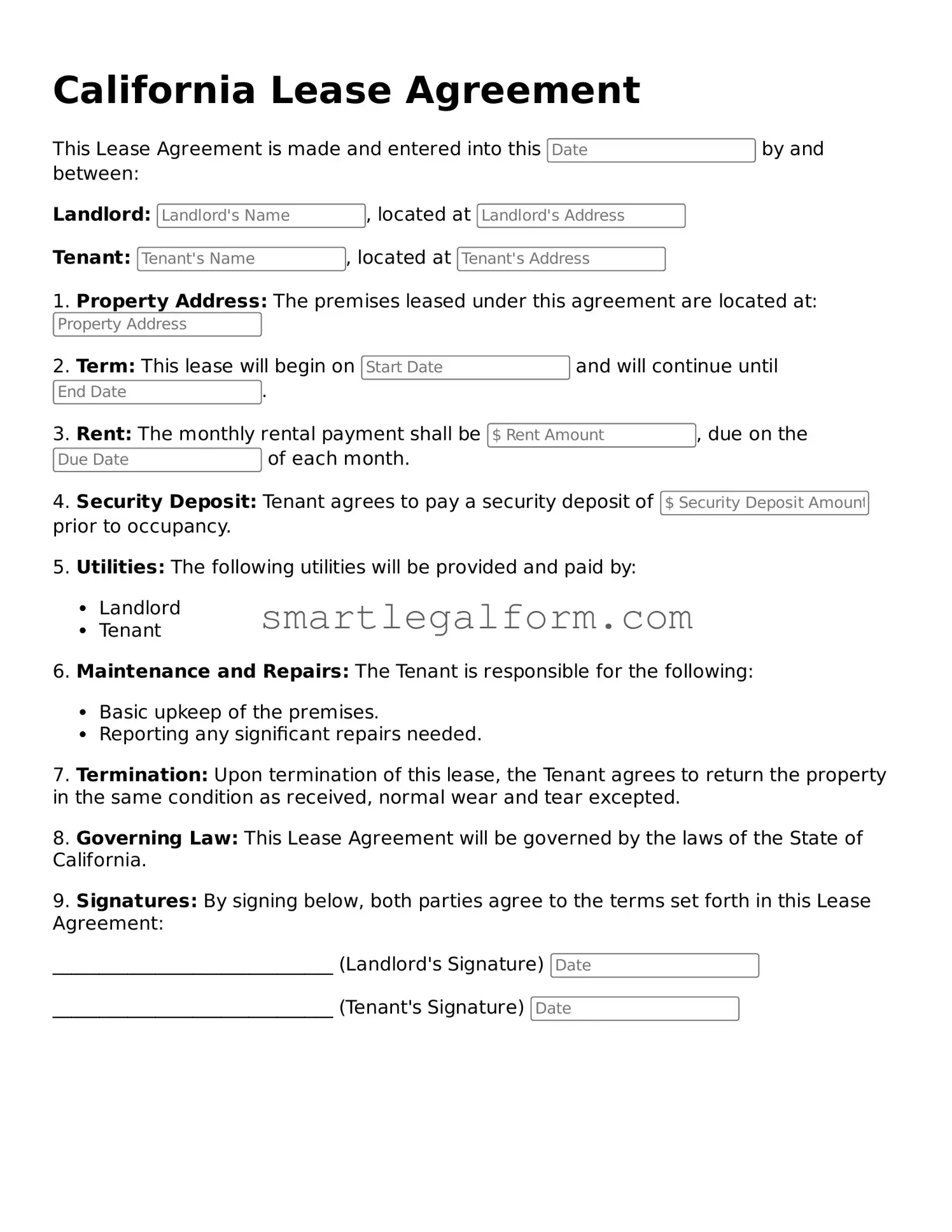Printable California Lease Agreement Document
A California Lease Agreement is a legally binding document that outlines the terms and conditions between a landlord and tenant for renting residential or commercial property. This form serves to protect the rights of both parties and ensures clarity regarding rental payments, property maintenance, and other essential obligations. To get started on your rental journey, fill out the form by clicking the button below.
Fill Out Your Form Online
